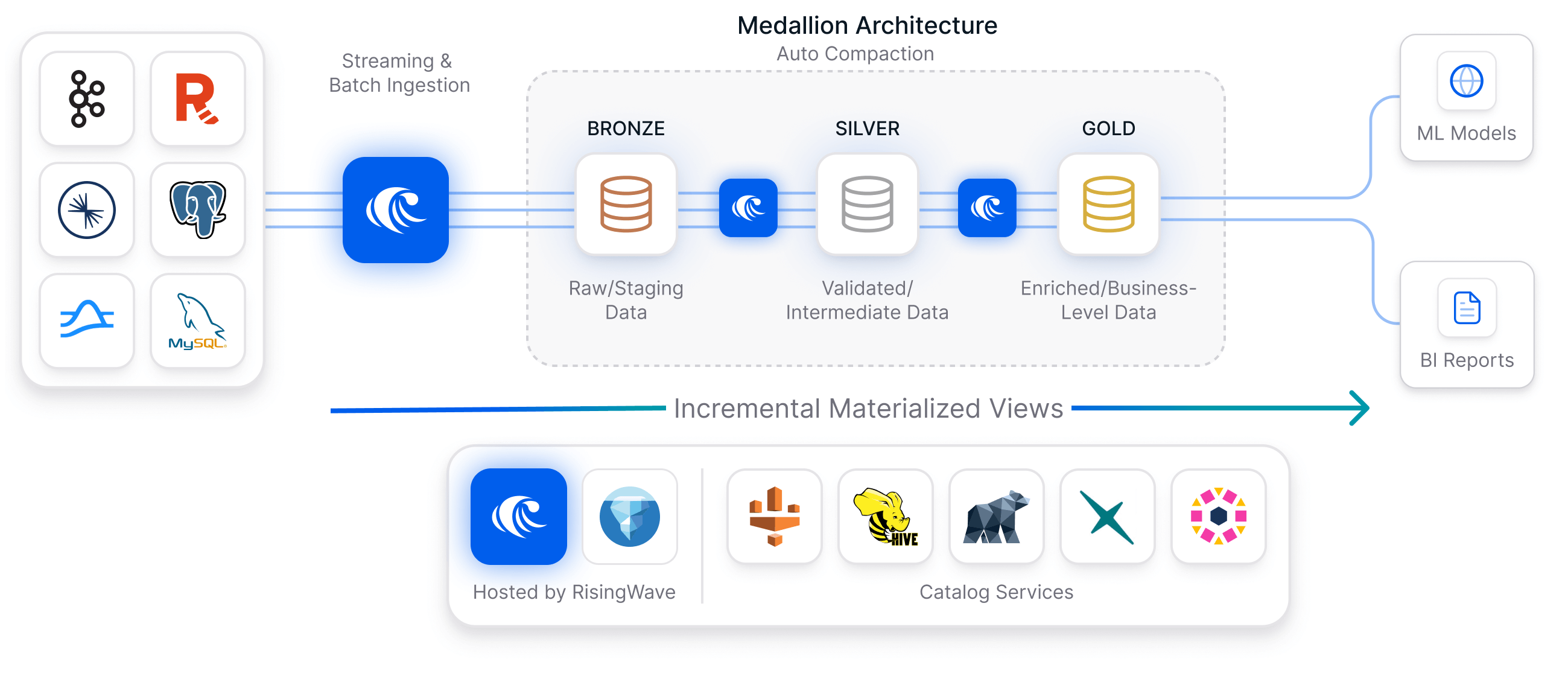RisingWave in a medallion architecture
RisingWave bridges real-time streaming systems with Iceberg-based data lakes. It functions as the continuous ingestion, transformation, and maintenance service within a Medallion architecture, ensuring that data seamlessly transitions from raw sources to optimized, query-ready Iceberg tables through incremental computation and cascading materialized views.